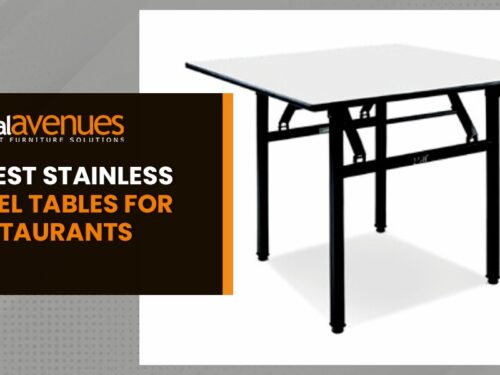

- Metal Avenues
- Furniture in India
- Comments Off on Furniture Industry in India Is Struggling Despite Having Vast Resources & Manpower
India has heritage of world famous furniture and artisans. Due to its large population it has tremendous Potential to become a large scale employment & foreign currency generator, with a little government Support and by removing speed breakers that stands in its path India can became international hub for furniture. In India furniture industry is not a organized sector only 10% of them are organized companies with only 3-4 middle size known brands in vast country and unfortunately they are all buying their maximum products from china. Balance 90% consists of unorganized small units, have no voice in government and with negligible contribution in GDP (0.5%), employing less then half a million.
We appreciate the push made by our hon’ble prime minister Mr. Narender Modi regarding “Make in India” but at present the policies encourages imports. A large part of industry prefer to buy From china due to following reasons:
Taxation
GST – Handcrafted wood and metal furniture items which were previously taxed at 5 & 12.5% are now taxed at 28% under the new GST system Which is supposed to be for demerit or luxury goods. This is a big mistake that needs to be rectified at earliest we cannot say that a basic chair or a Bed is actually a luxury. The 28% incidence of tax rate will make basic furniture very expensive for middle class customer and this might well be the last nail in the coffin of the already reeling furniture sector. 90% furniture manufacturers in India are very small in size & are from unorganized sector which provide large chunk of its Employment in remote rural area & cities. Extremely high rate of taxation has potential to adversely disrupt this small scale industry. They (90% of the total furniture manufacturers) will not be able to get the input credit of 28% GST & thus will become uncompetitive in supplying their goods to traders. This will turn extremely high number of families involved in this trade Upside down & will exit the industry all together clearing the path for importers and big manufacturers only. EPCG – Infrastructure in India is booming but maximum hotel and IT Projects are buying their furniture requirement from china under EPCG scheme which allows them to import on almost negligible tax or duties. This makes Indian vendors totally out of the game. This distorts the market in favor of imports. For a make in India push in furniture industry, it is imperative that a level playing field be established by removing this clause.Technology and Infrastructure
Due to lesser technological advancement & lack of infrastructure in this sector the modern contemporary & good designer furniture which is required by all new hotels, Malls, Infrastructure projects, new offices in booming Indian economy is not manufactured in India. It is mainly imported from china.Requires Large Amount of Space
The furniture is voluminous item which requires large amount of storage and manufacturing space and has a large demand in big cities, so it needs to be produced and stored near or in side these cities to reduce substantial logistic cost. Due to non availability of government provided furniture hubs like china in India the expensive real estate cost adds to the cost of goods and thus making it expensive or unviable when compared with cheaper Chinese furniture, also the 50 years old industrial building by laws in cities like Delhi “Which allows very low FAR” makes this product further unviable.Lessons from Chinese Furniture Industry
China has a booming furniture industry and it exported furniture worth $85 billion 2015, whereas India stands at less than $ 1 billion annually. At present the furniture trade employs 8 million people in China whereas in India it employs less than half million people. The furniture industry in China was able to achieve this as many operational problems were removed by the government. With active support from the government, China stands at a dominating position, exporting furniture all over the world.We Describe How This Was Achieved
The furniture industry is characterized by a large number of small enterprises. Smaller firms usually produce basic products and utilize relatively low levels of technology; therefore, these firms have more workers and lower capital intensity than larger firms. These units are in the unorganized sector. If they can be brought under one hub, they can use technology and improve their efficiencies. We could learn from China, which has over 70,000 furniture manufacturers. China government has set up 5 furniture zones which have world class expo marts, big manufacturing zones, design institutes and skill development centers in these furniture cities. The average size of a furniture factory in China is 20000 sq ft where as in India it is less than 1000 sq ft, which prevent us from using technology and achieving economies of scale. If the government can assist in setting up furniture cities, it will go a long way of developing the furniture industry, which will save billions of dollars in foreign exchange & due to vast resources & cheep manpower available in India, we can become net exporters of furniture in further earning billon of dollars in foreign exchange & employment for Indians. It has to be understood that Indian furniture industry, which consists if unorganized small units, have no voice in the government and with negligible contribution in GDP (0.5 % ), employing less than half a million. There is huge employment opportunity in this sector. We can compete with China if facilities are given to us and taxation is reduced. The rapid development of the furniture industry in China over the past 12 years has been due to largely investment and joint ventures, attracted by huge infrastructure made by government with cheap land in designated zones, sufficient raw materials, training and learning centers, competitive export tariffs, special sez zones and other incentives for production and exports. The cities of Dongguan and Shenzhen accounted for virtually all of Guangdong’s furniture exports.Solutions
- Government to develop special zones for furniture on the lines of Foshan city china with industrialbelts, expo centers, marts, & training centers.
- Any industry which is labor intensive and is dominated majorly by unorganized small scale cottage industry should not be taxed more than 12% GST so gst on furniture to be reduced to previous level of 5 or 12% .
- EPCGFacility on furniture import with zero tax should be reviewed & abolished.
- Old building construction bylaws should be revised and implemented as per modern international practice in developing countries.
- should incentivize& reward new & upcoming manufacturers in proportion to their turnover, labour employment & tax payment.






